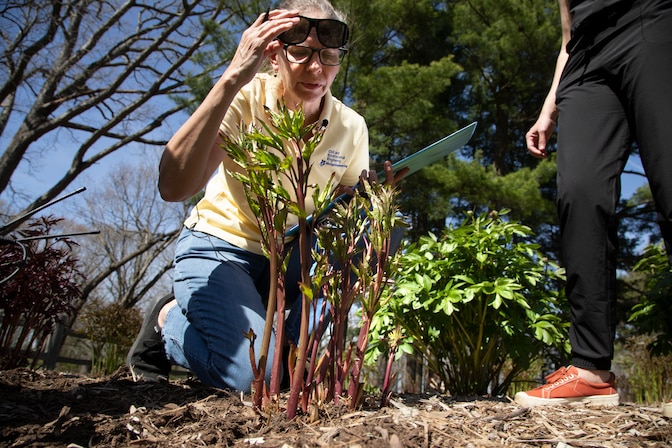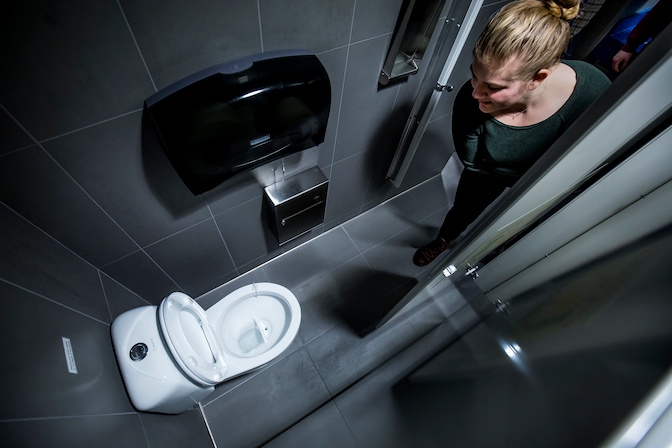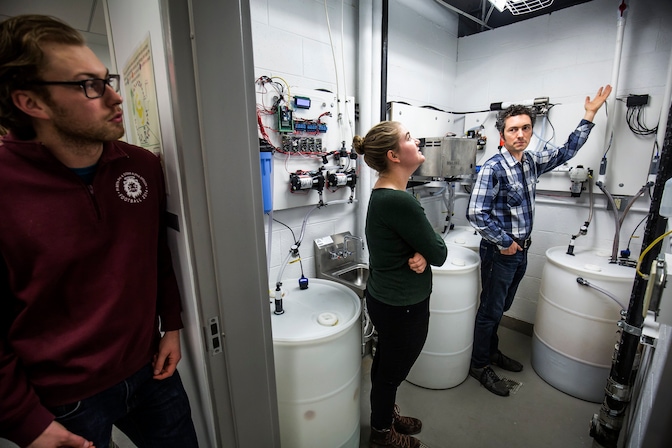
Urine-to-fertilizer effort part of NSF Regional Innovation Engine
U-M involved in Great Lakes consortium to support sustainable economic growth

U-M involved in Great Lakes consortium to support sustainable economic growth
A $15 million effort to wring both valuable resources and harmful pollutants out of wastewater involves University of Michigan researchers and educators.
U-M is a partner in the Great Lakes Water Innovation Engine, one of ten regional hubs the National Science Foundation announced this week as part of a program that’s among the largest broad investments in place-based research and development in the nation’s history, according to NSF. Each NSF Engine could receive up to $160 million over the next decade, adding up to a potential investment of $1.6 billion.
The funding establishes Great Lakes ReNEW, a 53-member consortium that aims to “turn waste into wealth and health.” ReNew members will develop new ways to remove from wastewater both emerging contaminants, such as PFAS, and critical commodities including renewable energy, minerals for batteries and nutrients for fertilizer.

ReNEW is led by Current, a Chicago-based nonprofit, in partnership with Argonne National Laboratory and the University of Chicago. At U-M, partners at present include Michigan Engineering, the Office of the Vice President for Research and the School for Environment and Sustainability. Additionally, U-M’s Center for Entrepreneurship leads NSF’s Great Lakes Regional I-Corps hub, which belongs to the consortium. I-Corps trains scientists and engineers to carry their ideas and technologies out of the lab and into the marketplace to benefit society.
U-M researchers will work with the Rich Earth Institute, a Vermont-based non-profit, to develop a building-scale testbed that routes different types of wastewater separately from the outset, making treatment and resource recovery easier, cheaper and more energy efficient. Additionally, they will develop the local and centralized systems that enable it to be sustainable and commercializable.

Typically today in the Western world, so-called gray water from kitchens, showers and laundry mixes in sewer pipes with “yellow-” and “brown water” from toilets. Brown water—made that way by solid human waste—contaminates the entire wastewater stream, complicating treatment, processing and recycling.
While “source separation” requires some new infrastructure, it enables a circular water economy, and could save energy, money and time. Gray water can more easily be treated for non-potable water uses like toilet flushing or lawn irrigation. Brown water can be processed into products for chemical manufacturing, biogas, or biochar. And urine could be sanitized and converted into fertilizer for plants—a transformation this team has worked together to achieve through their ‘peecycling’ efforts over the past decade.
U-M’s Department of Civil and Environmental Engineering operates the nation’s first university-based system that includes a source-separating toilet and urinal and building-scale urine processing facility. And the Rich Earth Institute leads the first community-scale urine separation and fertilizer processing program in the U.S.

“What’s most exciting about this project is that we’re continuing to move beyond the university walls and put the knowledge we’ve created into practice with a broad range of partners,” said Nancy Love, the Borchardt and Glysson Collegiate Professor and the JoAnn Silverstein Distinguished University Professor of Environmental Engineering in the U-M Department of Civil and Environmental Engineering.
“To achieve the kind of change we need to achieve as a society, we have to force ourselves out of our comfort zone. We need to figure out not only how to avoid waste, but also how to extract value out of things we’ve traditionally thought of as waste and put it back into use in an equitable and sustainable way.”
ReNEW partners include research institutions, industry, investors, government and nonprofit organizations from Illinois, Indiana, Michigan, Minnesota, Ohio, and Wisconsin.
“Since its inception, the University of Michigan has been committed to generating new knowledge, developing cutting-edge technologies and advancing innovative research to address the root causes of, and potential solutions for, the most important issues impacting our Great Lakes,” said Rebecca Cunningham, U-M vice president for research and innovation. “I am incredibly excited to see how the Great Lakes Water Innovation Engine will advance our commitment toward ensuring the continued health and safety of our Great Lakes.”
NSF’s Regional Innovation Engines program aims to spur economic growth in regions that have not fully participated in the technology boom of the past few decades. The Great Lakes hold 90% of the nation’s fresh water and supply drinking water to 40 million residents of the US and Canada. As water-intensive industry grows in the region, the Great Lakes Water Innovation Engine aims to develop and deploy intelligent water resource recovery system testbeds to support sustainable economic growth. In the first two years, the project will focus on Illinois, Ohio and Wisconsin.

Marketing Communications Specialist
Department of Civil and Environmental Engineering